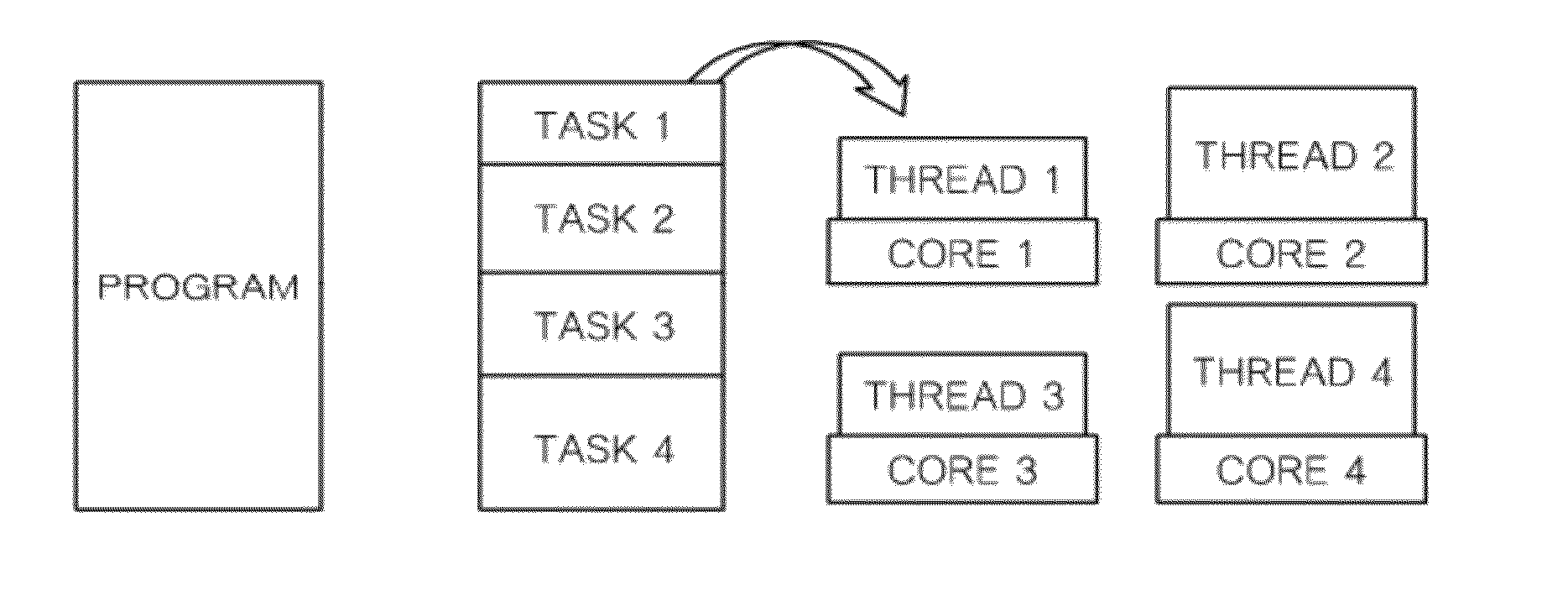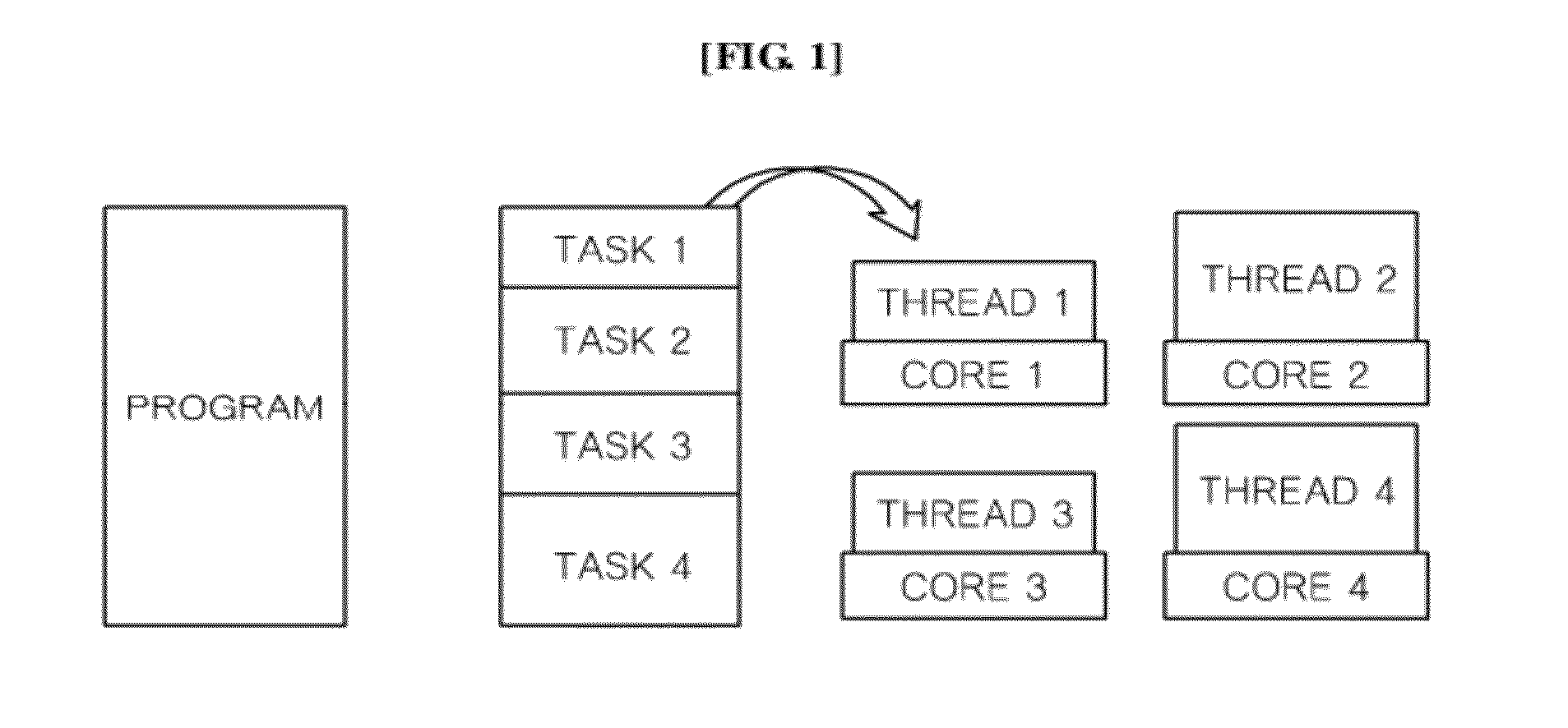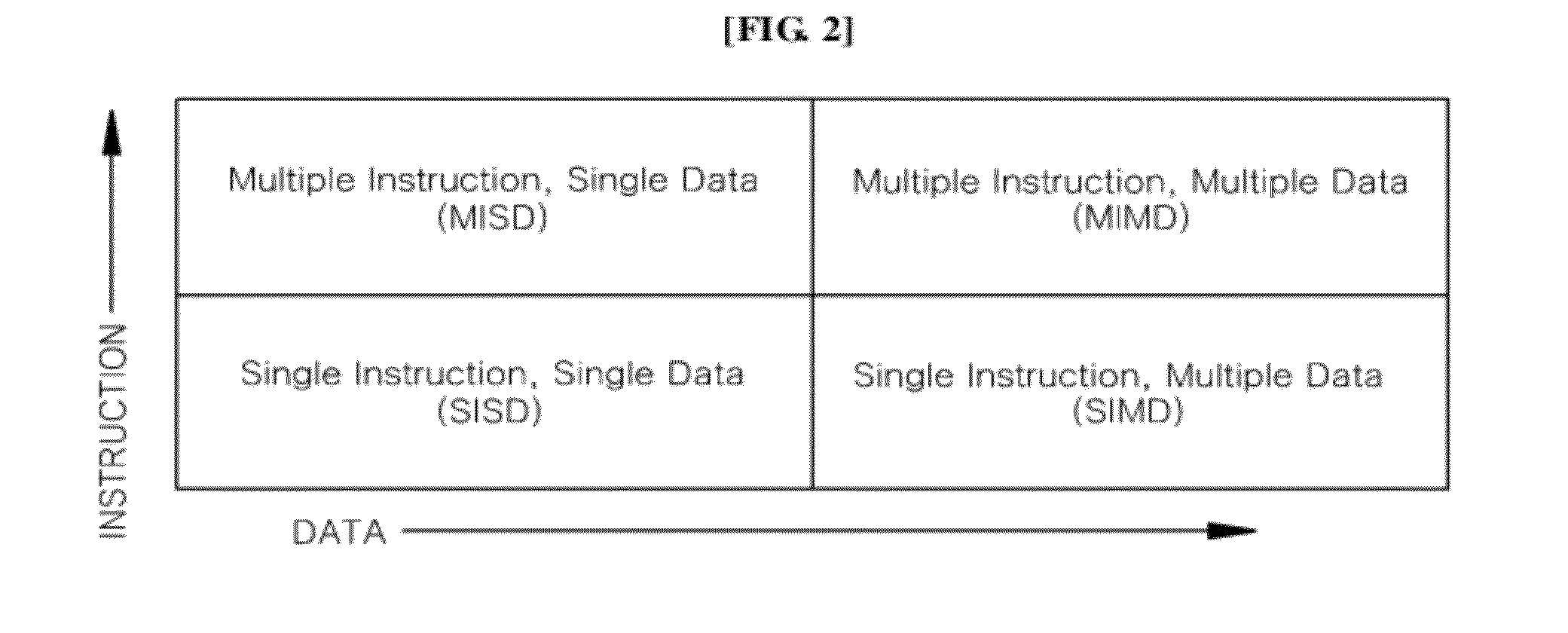Parallel collision detection method using load balancing and parallel distance computation method using load balancing
a collision detection and parallel distance technology, applied in the field of parallel collision detection methods and parallel distance computation methods, can solve the problems of limiting the speedup which can be obtained, limiting the effect of obtaining the result value of equation 2, and difficulty in geometrically increasing the speed any mor
- Summary
- Abstract
- Description
- Claims
- Application Information
AI Technical Summary
Benefits of technology
Problems solved by technology
Method used
Image
Examples
embodiment
[0084]The present invention has implemented collision detection and distance computation for rigid models in parallel using a CPU. FIG. 10 is a view illustrating an embodiment of models used for benchmarking the present invention. For the experiment of the present invention, collision detection and distance computation are performed on 9 cases using polygon models of (bunny 1 and bunny 2), (club and gear), and (watch 1 and watch 2), which are arranged from the left of FIG. 10.
[0085]First, an embodiment related to collision detection will be described below.
[0086]As an embodiment of the present invention, the average collision detection time is obtained by measuring the collision detection time of each frame in such a way that two objects of a polygon soup are overlapped by substantially ¼ (first case), ½ (second case) and 1 (third case), and one rigid model is rotated 72 times by 5° centering on a y axis (rotated total 360°). α of Equation 6 is set to 0.8. FIGS. 11A to 11C show the ...
PUM
 Login to View More
Login to View More Abstract
Description
Claims
Application Information
 Login to View More
Login to View More - R&D
- Intellectual Property
- Life Sciences
- Materials
- Tech Scout
- Unparalleled Data Quality
- Higher Quality Content
- 60% Fewer Hallucinations
Browse by: Latest US Patents, China's latest patents, Technical Efficacy Thesaurus, Application Domain, Technology Topic, Popular Technical Reports.
© 2025 PatSnap. All rights reserved.Legal|Privacy policy|Modern Slavery Act Transparency Statement|Sitemap|About US| Contact US: help@patsnap.com



